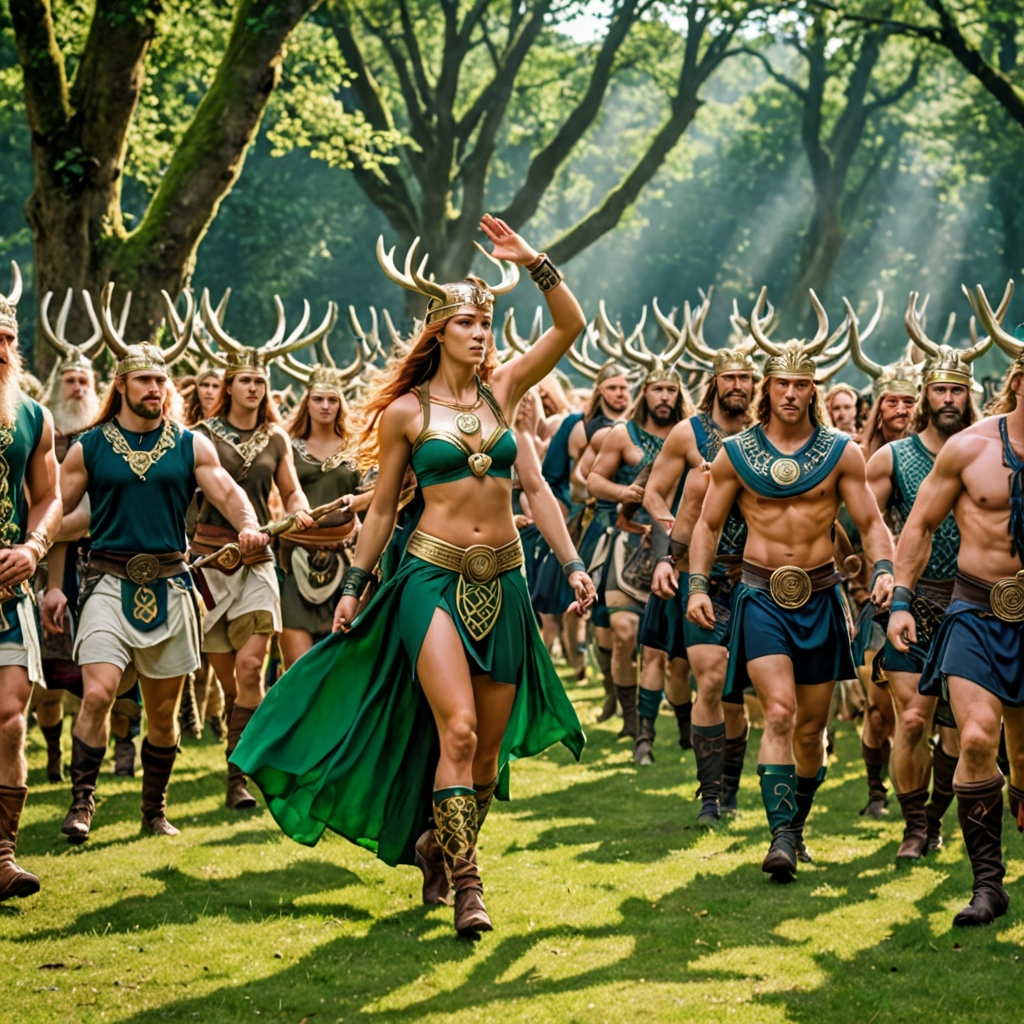The Sacred Festivals and Celebrations in Celtic Mythology
Centuries ago, the Celts celebrated a variety of festivals and sacred occasions deeply rooted in their mythology, honoring the cycles of nature and the spiritual beliefs that shaped their culture. Let’s delve into some of the significant celebrations that were an integral part of Celtic mythology.
The Beltane Festival
Beltane, typically celebrated on May 1st, marked the beginning of the summer season for the Celts. This fire festival symbolized fertility, growth, and the coming abundance of the warmer months. It was a time when bonfires were lit, and rituals were performed to ensure a bountiful harvest and protection for the community throughout the year.
Samhain: The Celtic New Year
Samhain, celebrated on October 31st to November 1st, marked the Celtic New Year and the end of the harvest season. It was believed that during Samhain, the boundary between the world of the living and the spiritual realm was at its thinnest, allowing spirits to move freely among humans. The Celts would light bonfires and wear costumes to ward off malevolent spirits during this time.
Imbolc: Celebration of Brigid, Goddess of Fire
Imbolc, celebrated on February 1st, honored the goddess Brigid and marked the midway point between the winter solstice and the spring equinox. It was a time to purify the home, light candles, and welcome the returning light of the sun. Brigid was revered as the goddess of fire, fertility, and craftsmanship, and her influence was acknowledged through rituals and dedications.
Lughnasadh: The Festival of Lugh
Lughnasadh, celebrated around August 1st, honored the god Lugh, the skilled craftsman of Celtic mythology. This festival was closely tied to the harvesting of grains and the first fruits of the season. The Celts engaged in games, feasting, and competitions to honor Lugh and ensure a successful harvest season ahead.
These sacred festivals and celebrations in Celtic mythology provided the community with opportunities to connect with nature, honor their deities, and strengthen social bonds. The traditions and rituals observed during these occasions were steeped in reverence for the natural world and the spiritual forces that governed their lives.
FAQ About Sacred Festivals and Celebrations in Celtic Mythology
What are Sacred Festivals in Celtic Mythology?
Sacred festivals in Celtic mythology are special occasions and celebrations that hold spiritual significance for the Celtic people. These festivals often mark important events in nature, such as the changing of seasons, and honor deities and ancestors.
What are some examples of Sacred Festivals in Celtic Mythology?
Examples of sacred festivals in Celtic mythology include Beltane, celebrated in May to welcome the summer season, and Samhain, marking the end of the harvest season and the beginning of winter. Other important festivals are Imbolc, celebrating the onset of spring, and Lughnasadh, honoring the Celtic god Lugh.
How were these Festivals Celebrated?
Celtic festivals involved various rituals, ceremonies, feasting, dancing, and bonfires. People would often gather to pay homage to their gods, seek blessings for the upcoming season, and participate in activities that symbolized renewal, harvest, or protection.
Why are these Festivals Important in Celtic Mythology?
These festivals were vital in Celtic mythology as they connected the people with their spiritual beliefs, the cycles of nature, and the divine forces they worshipped. They reinforced community ties, cultural identity, and beliefs in the interconnectedness of all living beings.





